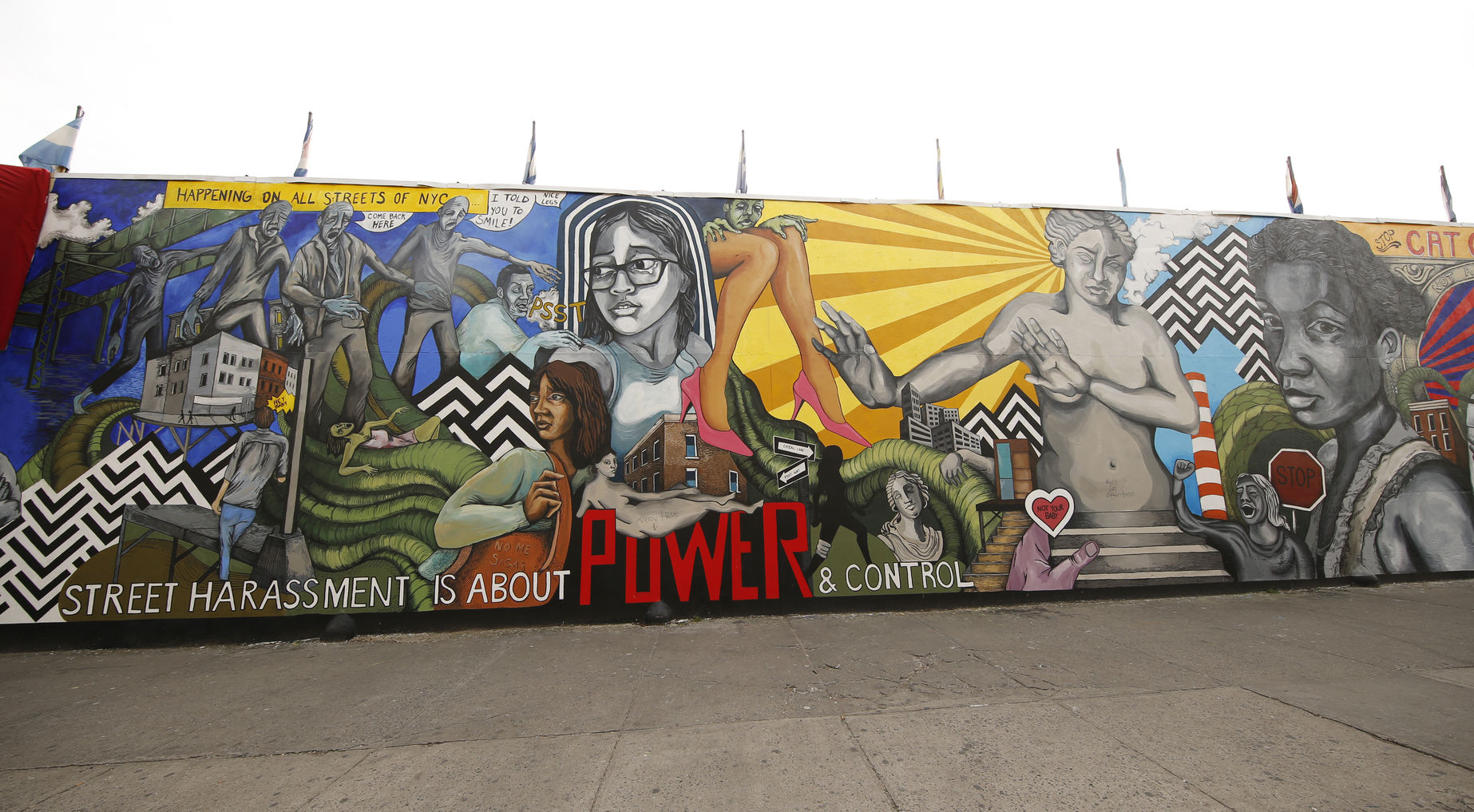
Street harassment mural in NYC.
AN EIGHT-YEAR-OLD in a white shirt with a Peter Pan collar and a green plaid jumper, I didn’t know what to do the first time I saw a man my parents’ age ogling me.
“Mother-in-law!” he called to my mother.
“Alicia, get in the car!”
I didn’t know what I did wrong, or whether she was mad at me or him. I was embarrassed and uncomfortable, and felt guilty for no real reason.
84% of women globally first experience street harassment before the age of 17. Nearly 50% of Bahamian women experienced street harassment before 13.
After that day, I didn’t like being out in public, walking past strangers, or doing anything I thought could draw attention to myself. I soon noticed that men didn’t blatantly stare at me or make comments about my body when my father was present. As we got older, I opted to have my younger brother around to ward off any would-be harassers.
65% of Bahamian women reported choosing not to attend social events to avoid harassment. 54% of American women made the same decision.
More than a decade went by before I could name these experiences and responses, and the systems — like patriarchy — that created this environment. I talked about street harassment with friends and on social media often. I shared countless stories highlighting the misogyny I encountered every day, and how I felt when men yelled, whispered, and made noises at me, threw their car doors open toward me, followed me, and tried to touch me. I mastered the art of smart-ass responses.
Harasser: “Hey, brown sugar!”
Me: “Hey, slow molasses!”
—
Harasser: “Short pants!”
Me: “Short d!$%!”
—
Harasser: “Your boyfriend shouldn’t have you walking, girl.”
Me: “Your mother shouldn’t have you talking, boy.”
This sometimes results in more violent language from men who claim they only want to “compliment” me. They don’t want to see me as a whole person; refusing to be an object in a one-way engagement reminds them of my humanity. When forced to recognize my personhood, they try demeaning or threatening me.
Harasser: “Carry your big panty!”
Harasser: “That’s why your ass will get raped.”
Sometimes these words cling to me, following me to the car, down the street, or to the next building I enter. They echo in my ears, keeping me on the receiving end until I choose to respond.
To holla back is to get my power back. Whenever I feel safe enough, I either respond in kind, with as much sarcasm as I can muster, or name the behavior and tell harassers why they should stop sexually harassing people. When I don’t, I share my story to let people know what it’s like to experience street harassment.
I was in my late twenties when I saw Laci Green’s Creeps on the Street video. The video introduced me to Hollaback!, and I poured over the website to learn about the organization and its work. Tired of the silence around sexual harassment in The Bahamas, I applied to become a site leader. Following months of training, Hollaback! Bahamas launched in April 2014.
Public dialogue about street harassment has shown how few people consider impact versus intent. Harassers are preoccupied with their own feelings. Either they want to exercise masculinity and dominance, or their focus is on their “good intentions” — “making women feel good.” The “good guys” don’t consider the effect — impact — of their actions on the people they harass. Feelings of anger, sadness, and fear are of no consequence, because they meant to give someone a confidence boost.
“Street harassment of any kind seems to result in strong feelings of anger — but fear and anxiety are primarily rooted in the actions of groping, exposure and following/stalking.”
— Cornell University and Hollaback! International Study, 2014
In social justice work, we frequently talk about the importance of listening to people when they tell you how your words, actions, or inaction make them feel. If you want to make people feel good, but have the opposite effect, it only makes sense to adjust your behavior — not try to convince them that what you’re doing is great.
Bystander intervention is key to our anti-street harassment work. It is important for people to know they’re not alone, sexual harassment is not their fault, and that someone has their back. We need a multiplicity of voices saying street harassment is not harmless or funny, and will be called out. To help people understand street harassment — definition, root cause, and effects — and combat it, we have to use statistics available to us, and continue sharing our stories.
















